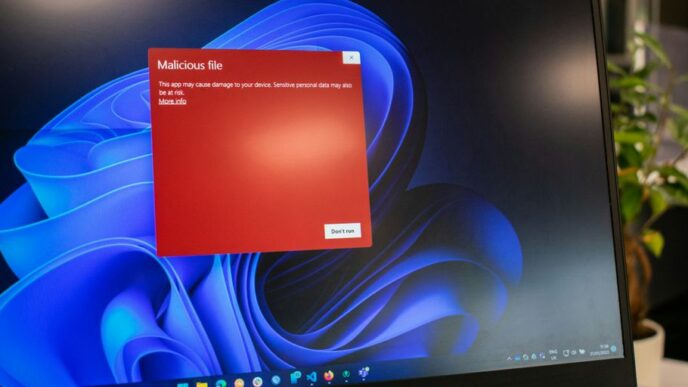Alright, so you’re probably hearing a lot about pen testing lately, right? It’s not just some tech buzzword anymore; it’s becoming super important for pretty much any business out there. We’re talking about how cyberattacks are getting wilder, and old security methods just don’t cut it. This article is all about what’s new in pen testing, why it matters more than ever, and what we can expect down the road. We’ll break down the latest pen testing news and trends, so you can get a clear picture without all the confusing jargon.
Key Takeaways
- Pen testing is a must-have in 2025 because cyberattacks are getting worse, and regular vulnerability scans aren’t enough to stop them.
- The pen testing market is growing fast, expected to hit almost $7 billion by 2032, because businesses need better ways to fight off threats.
- Industries like finance, healthcare, retail, and manufacturing are really getting into pen testing to protect their sensitive data and systems.
- Pen testing methods are changing to keep up with new attack types, focusing on things like phishing, ransomware, and fixing system mistakes.
- The future of pen testing will likely include more AI, continuous security checks, and reports that show real results, moving from just checking boxes to actually adding value.
Why Pen Testing Matters in 2025
2025 is shaping up to be a wild year for cybersecurity. It feels like every week there’s a new headline about some massive data breach or ransomware attack. If you’re wondering whether penetration testing is still relevant, the answer is a resounding YES. It’s not just about ticking a compliance box anymore; it’s about survival.
Surging Cyberattack Statistics
The numbers don’t lie. Cyberattacks are on the rise, and they’re getting more sophisticated. We’re not talking about minor annoyances; these are full-blown crises that can cripple businesses. The 2025 State of Pentesting Report highlights a concerning trend: breach rates are climbing despite increased security spending. It’s like trying to bail water out of a sinking ship with a teacup. Here’s a quick look at some key stats:
- A recent study showed a 38% increase in cyberattacks in the first half of 2023. That’s a huge jump, and it’s only expected to get worse.
- Ransomware attacks are becoming more targeted and more damaging. They’re not just going after big corporations; small and medium-sized businesses are also in the crosshairs.
- The average cost of a data breach is now in the millions of dollars. That’s enough to put many companies out of business.
Limitations of Traditional Vulnerability Scans
Vulnerability scans are like doing a quick check-up at the doctor’s office. They can identify some obvious problems, but they don’t give you the full picture. They often miss complex vulnerabilities and misconfigurations that attackers can exploit. Plus, they don’t simulate real-world attacks. It’s like knowing you have a weak spot but not knowing how an attacker might try to exploit it. Traditional scans simply can’t keep up with the evolving threat landscape. Attackers are using AI and other advanced techniques to find new ways to break into systems. We need something more robust.
Pen Testing as a Strategic Imperative
Penetration testing is no longer just a nice-to-have; it’s a must-have. It’s a strategic imperative for any organization that wants to protect its data and its reputation. Think of it as hiring ethical hackers to try and break into your systems. They’ll use the same tools and techniques as real attackers, but they’ll do it with your permission. This allows you to identify vulnerabilities and fix them before they can be exploited. It’s like a dress rehearsal for a real attack. By proactively identifying and addressing weaknesses, businesses can significantly reduce their risk of a successful cyberattack. It’s about shifting from a reactive to a proactive security posture. It’s about taking control of your security, rather than waiting for something bad to happen.
The Global Pen Testing Market: Exploding Growth

Okay, so the pen testing market? It’s not just growing; it’s exploding. Seriously, the numbers are kind of wild. It’s like everyone suddenly realized they need to actually try to break into their own systems before someone else does it for real.
Market Size and Projections
The global pen testing market is expected to reach almost $7 billion by 2032. That’s up from $1.92 billion in 2023. I mean, whoa, right? It feels like just yesterday we were talking about whether companies even needed pen testing. Now it’s a must-have. This growth shows the increasing importance of security and vulnerability management in today’s digital landscape.
Compound Annual Growth Rate
We’re looking at a CAGR of over 15%. That’s a crazy fast growth rate. It’s like the tech world, but even more intense. You can see why companies are investing more in penetration testing services.
Driving Factors Behind Market Expansion
So, why is this happening? A few things:
- More sophisticated attacks: The bad guys are getting smarter, using AI and new techniques. Basic security measures just don’t cut it anymore.
- Increased regulatory scrutiny: Governments are cracking down on data protection. Compliance isn’t optional; it’s the law. This is especially true in sectors like finance and healthcare, where regulations are stringent.
- Growing awareness: Companies are finally realizing that data breaches are incredibly expensive, not just in terms of money but also reputation. Nobody wants to be the next headline for a massive data leak. This awareness drives the demand for proactive security measures.
Industry and Regional Adoption Trends
Finance and Banking Sector Leadership
It’s really no surprise that finance and banking are leading the charge when it comes to pen testing adoption. They’re dealing with tons of customer data, complex payment systems, and face super strict regulations. You mess up in this sector, and the consequences are huge. So, they’re investing heavily in security, and pen testing is a big part of that.
Healthcare Sector Adoption Drivers
Healthcare is another big adopter, and honestly, it’s about time. HIPAA compliance is a major driver, but the real kicker is the rise of ransomware. Hospitals are prime targets, and a successful attack can literally cost lives. They’re finally realizing that traditional security measures aren’t enough, and they need to actively hunt for vulnerabilities.
Retail and Manufacturing Pen Testing Demand
Retail and manufacturing are interesting because they’re dealing with a mix of old and new tech. You’ve got legacy systems running alongside IoT devices, which creates a ton of potential attack vectors. Plus, they’re often handling sensitive customer data and intellectual property, making them attractive targets. I think we’ll see even more growth in these sectors as they try to secure their increasingly complex environments.
Evolving Pen Testing Methodologies
It’s a constant game of cat and mouse in cybersecurity. As attackers get more sophisticated, pen testing methods have to evolve to keep up. This means testers need to continuously adapt and learn new techniques. It’s not enough to rely on the same old tricks anymore.
Adapting to New Attack Vectors
New attack vectors are popping up all the time. Think about the rise of cloud-based attacks, or the increasing complexity of IoT devices. Pen testers need to be ready to simulate these attacks and find vulnerabilities before the bad guys do. Staying ahead means understanding the latest threats and how they work. This requires continuous learning and adaptation.
Focus on Phishing and Ransomware
Phishing and ransomware are still huge problems, and they’re not going away anytime soon. Pen testers need to be experts at simulating these attacks, testing employee awareness, and identifying weaknesses in security protocols. It’s about more than just technical skills; it’s about understanding human behavior and how attackers exploit it.
Addressing Misconfigurations
Misconfigurations are low-hanging fruit for attackers. A simple mistake in a server setting or a poorly configured firewall can open the door to a major breach. Pen testers need to be meticulous in identifying these misconfigurations and providing clear recommendations for fixing them. It’s often the small things that make the biggest difference.
Future Trends in Pen Testing

Artificial Intelligence Augmented Testing
AI is starting to change the game. Instead of just relying on human testers, we’re seeing AI step in to automate some of the more tedious tasks and even identify vulnerabilities that might be missed by human eyes. This doesn’t mean pen testers are going away, but it does mean their roles are evolving. AI can handle the initial scans and surface potential issues, freeing up the experts to focus on the complex stuff – like chaining exploits together or thinking outside the box to bypass security measures. It’s like having a super-powered assistant that never gets tired.
Continuous Security Validation
Remember when pen tests were something you did once a year to check a box? Those days are over. Now, it’s all about continuous security validation. Think of it as always-on pen testing. With the rise of cloud and DevOps, systems are changing constantly, so security needs to keep up. Continuous penetration testing, integrated with CI/CD pipelines, is becoming the norm. This way, you’re not just finding problems, you’re fixing them before they become major headaches. It’s a much more proactive approach.
Outcome-Based Reporting Demand
No one wants a report that’s just a list of vulnerabilities. What businesses really want to know is: what’s the impact of these vulnerabilities? How likely are they to be exploited? And what’s the best way to fix them? That’s where outcome-based reporting comes in. It’s about focusing on the business risk and providing actionable recommendations. It’s not enough to say "you have a SQL injection vulnerability." You need to explain what an attacker could do with it and how to prevent it. People want to see the value they’re getting from vulnerability assessments, and outcome-based reporting delivers that.
Key Shifts in Pen Testing Approaches
It feels like just yesterday that pen testing was this reactive thing, something you did after a breach or when compliance demanded it. But things are changing, and fast. Now, it’s all about getting ahead of the curve and proving real value, not just ticking boxes.
From Reactive to Proactive Security
The biggest shift is moving from a reactive to a proactive security posture. Instead of waiting for something bad to happen, companies are using pen testing to actively hunt for vulnerabilities before attackers can exploit them. It’s like going from playing defense to offense – a much better strategy in the long run. Traditional vulnerability scans aren’t cutting it anymore; you need simulated attacks by ethical hackers to find the real gaps.
From Compliance-Driven to Value-Driven Testing
For a long time, pen testing was often seen as a necessary evil for meeting compliance requirements. Now, companies are realizing it can actually provide real business value. This means focusing on the areas that matter most to the organization, like protecting critical assets and preventing data breaches. It’s about getting a return on investment, not just satisfying auditors.
Emphasis on Retesting and Real-World Exploitation
One-off pen tests are becoming a thing of the past. The focus now is on continuous security validation, with regular retesting to ensure that vulnerabilities are actually fixed and that new ones aren’t introduced. And it’s not just about finding vulnerabilities; it’s about demonstrating how they can be exploited in the real world. This helps organizations understand the true impact of security flaws and prioritize remediation efforts effectively. Basically, you hire a good guy to act like a bad guy to beat that bad guy at his own game.
Final Thoughts: Where Pen Testing Is Headed
So, that’s the scoop on pen testing right now. It’s not just about checking boxes anymore; it’s about staying ahead of the bad guys. Threats are always changing, and if businesses want to keep their stuff safe, they need to treat testing as something they do all the time, not just once in a while. It’s pretty clear that the companies that get this will be the ones that do well. If you’ve got questions about any of this, or just want to talk security, feel free to reach out. I’m always happy to chat and share what I know!
Frequently Asked Questions
What exactly is penetration testing?
Penetration testing is like hiring a good guy hacker to try and break into your computer systems. They look for weak spots before bad guys can find them. This helps companies fix problems and keep their information safe.
Why is pen testing so important right now?
Pen testing is super important now because cyberattacks are happening more often and are getting trickier. Regular security checks aren’t enough anymore. Pen testing gives a real-world look at how strong a company’s defenses are.
How big is the pen testing market, and is it growing?
The market for pen testing is growing super fast! It’s expected to go from about $2 billion in 2023 to almost $7 billion by 2032. This huge growth shows how much companies need better security.
Which industries use pen testing the most?
Industries that handle lots of private information, like banks and hospitals, are using pen testing a lot. Also, companies that make things or sell goods are starting to use it more because their systems are getting more complex.
How are pen testing methods changing?
Pen testers are always learning new ways to find problems, especially with things like phishing (fake emails) and ransomware (when hackers lock your files). They also focus on making sure computer systems are set up correctly so there are no easy ways in.
What new things can we expect in pen testing?
In the future, pen testing will use smart computer programs (AI) to help find weaknesses faster. It will also be an ongoing process, not just a one-time check. Companies will want to see clear results showing how much safer they are after testing.














